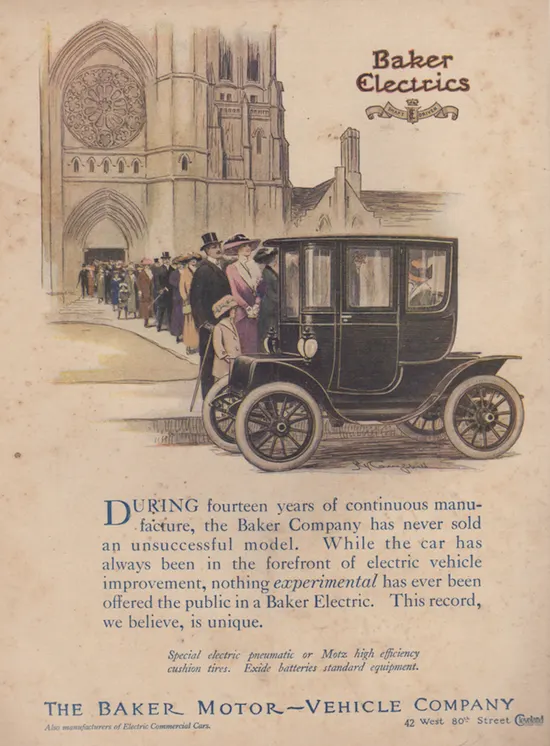We used to visit Paleofuture a couple times a month when he was hosted at Smithsonian Magazine but then he moved and we sort of lost track but now it appears he's back. Maybe
Via Paleofuture, August 14, 2012:
In 1910, Thomas Edison declared, “In 15 years, more electricity will be sold for electric vehicles than for light.”
Edison’s prediction would prove woefully inaccurate, but it's easy to understand his enthusiasm. The first decade of the 20th century was a golden age for electric vehicles. According to the IEEE, a full 28 percent of the 4,192 cars produced in the United States in 1900 were electric. Of course, Edison in 1910 also had a vested interest in seeing electric cars succeed, as he'd been working on more efficient batteries to put in them for nearly a decade. But there really did seem to be momentum building for the electric car.
By 1910, cities like Philadelphia, Cleveland, New York and Baltimore all had electric charging stations. And although internal combustion engine vehicles outsold electric vehicles during the previous decade, gasoline’s future dominance was not yet seen as a certainty in 1910.
Electric car companies like Baker Electrics in Cleveland (Thomas Edison was a customer), Hupp-Yeats in Detroit, Rauch & Lang in Cleveland, Columbus Electric in Columbus, and Anderson Electric in Detroit all took out numerous ads in the weekly magazine The Literary Digest. These electric car ads appeared alongside their gas-powered competitors and did their best to differentiate themselves—often as the more debonair choice in transportation. The Literary Digest had broad national appeal, but boasted that its readership included a large proportion of wealthy businessmen who would be able to afford the luxury of a clean and efficient electric vehicle.
Electric car advertising of this era touted the many benefits of electrics, such as its ease of use compared to gas-powered cars. Until the development in the early 1910s of the electric starter for gas-powered cars, electric cars were easier to start than internal-combustion cars because they didn't need to be hand cranked. The electric car was also seen as cleaner since they didn't pump out noxious exhaust along the road. This perception of cleanliness led them to be seen as more "refined," catering to a wealthier clientele. Of course, this appeal to wealthier customers was also driven by the electric car's higher operating and manufacturing costs.

Magazine ad for Baker Electrics (March 16, 1912 Literary Digest) (Novak Archive)
As a whole, the young auto industry dealt with consumers who were wary of new "experimental" technologies. But the electric car industry was hit particularly hard with skepticism around 1910 thanks to a mix of high expectations and rapid technological advancement by the gasoline-powered car manufacturers since 1900. As David A. Kirsch explains in his book, The Electric Vehicle and the Burden of History:
In absolute terms the electric vehicle of 1910 was vastly superior to the first-generation vehicles produced at the turn of the century; but relative to both expectations and the internal combustion vehicle of 1910, the passenger electric car was actually further from commercial viability than was its predecessor.
And thus, the electric car makers like Baker sought to combat the image that they were still working out the kinks, like in the ad above from the March 16, 1912 issue of Literary Digest.....
....MUCH MORE